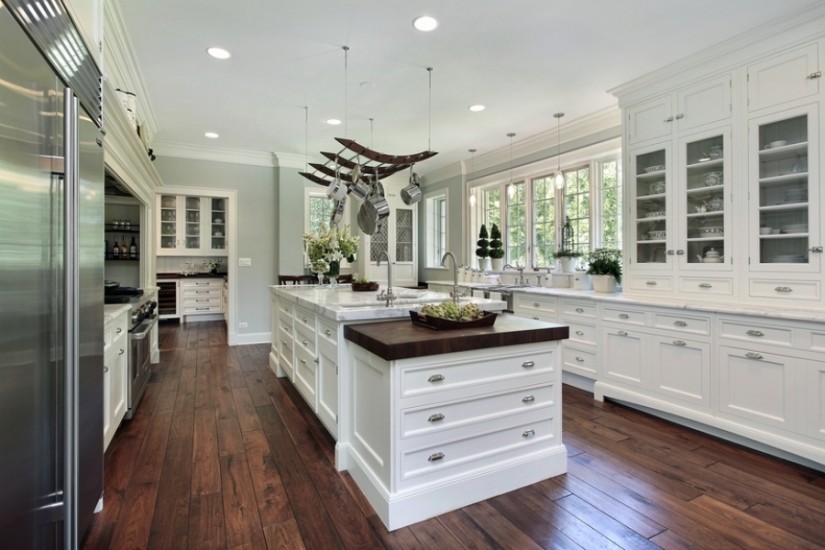Good lighting is important for two reasons: it increases the functionality of a room and makes it more comfortable. These two factors are especially necessary in the kitchen because it’s the place we cook, eat, entertain, and even do homework. Being able to see is essential for doing all of those things!
So how do you achieve the right lighting in the kitchen? First, it’s helpful to know the different lighting categories. There are three main types of lighting: ambient, task, and accent.
Ambient lighting or general lighting is most often the central source of light in a room. Its job is to make it comfortable to see and move around in a room. The American Lighting Association says, “Having a central source of ambient light in all rooms is fundamental to a good lighting plan.” Recessed can lights are a good example of ambient lighting.
Task lighting is appropriately named because it helps you see in order to complete tasks in the kitchen, like reading a recipe or washing dishes. The ALA recommends choosing task lights that are bright enough to prevent eye strain, but not so bright they cause a glare. Types of kitchen task lights include under cabinet lighting and pendant lighting.
Accent lighting is like the icing on a cake. It’s not essential, but makes the cake look way more appealing. In the same way, accent lighting creates visual interest in a room. It’s used to highlight artwork, a collection, or a focal point in the room. Track lights and picture lights are good examples of accent lighting. Lighting experts say accent lights should shine three times brighter than the ambient light.
Now that you know the three main types of lighting, here are a few tips for creating a lighting plan that works:
1. Layer, layer, layer.
Choosing just one type of lighting from the list above won’t give you the overall appealing look you’re going for. Kitchen design experts recommend using a combination of ambient, task, and accent lighting to get the best results. If you’re remodeling your kitchen or starting from scratch—don’t forget to think about lighting!
2. Keep your kitchen layout in mind.
Picking out the perfect lighting is no good if it doesn’t work in your kitchen. Take the layout of your kitchen into consideration before any work is done. If you’re planning to install an island think about how many pendant lights you’ll need. Also, factor in how you’ll be using the island. If you’re using it for preparing food and cooking, your lighting choices may be different than if you’re using it for entertaining and eating. If your kitchen is on the larger side, one source of ambient light may not be enough. Consider installing recessed can lights that’ll help brighten the space.
3. Note potential problem areas.
Problem areas are any place in your kitchen that may not get enough light. Think about places like the sink area (you’ll want to be able to see to get those dishes clean!) or the countertops under the cabinets. Identifying problem areas before remodeling or building will lead to less headaches later on.
4. Know your style and stick to it.
Picking out kitchen lighting can be extremely overwhelming because there are thousands of options to choose from. Think about the overall style of the kitchen (contemporary, traditional, transitional, etc) and pick out lighting that fits within it. This will help you narrow down your choices and keep your kitchen looking cohesive!
Image credit:amalhea lighting




